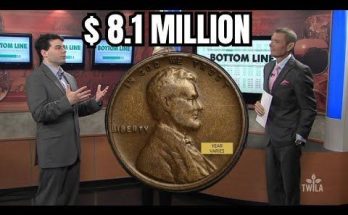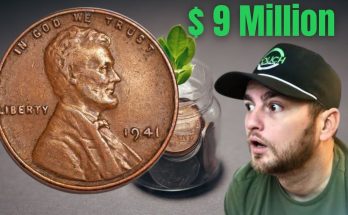THE penny is the smallest unit of American currency.
But some pennies are more precious than gold, and coin collectors will pay through the roof to score the rare coins.
Some one-cent pieces from the 18th and 19th centuries sell for thousands, but many of the most valuable pennies feature Abraham Lincoln.
The 16th president was added to the penny in 1909 to commemorate his 100th birthday.
He has been a mainstay on the cent ever since, and select Lincoln coins have become collectors’ pieces over the years.
In particular, many coins from the wheat cent series are considered highly valuable.
What is a wheat cent?
Every penny produced from 1909 until 1958 was a wheat cent.
The coins got their name from the design on the reverse, or tails side.
Victor David Brenner, the coin’s designer, depicted two stalks of wheat on the backside of the coin.
Each wheat cent also features the words “E Pluribus Unum,” as well as its value and country of origin on the reverse side.
The obverse, or heads side, of every wheat cent is President Lincoln’s face, surrounded by the words “Liberty” and “In God We Trust.”
Wheat pennies also include the year they were minted to the right of Lincoln’s chin.
Brenner’s wheat reverse side was replaced in 1959 with an image of the Lincoln Memorial that remains standard on modern pennies.
More than 60 years after the last wheat cent was produced, some coins from the series retain significant value because of errors or scarcity.
These are a few of the most valuable wheat cents ever sold.
1943 bronze cent – $305,000

In efforts to conserve bronze for World War II, the US Mint temporarily made its pennies out of steel in the 1940s.
“Demand for copper escalated in World War II because of its use in weapons and assorted other items necessary to prosecute the war effectively,” Ron Guth of Professional Coin Grading Services (PCGS) wrote.
The vast majority of pennies minted in 1943 were made of steel, but a small number of bronze coins were still created.
The bronze 1943 penny is one of the rarest coins in existence.
A circulated version of the coin sold for $305,000 at auction in 2016, and the lowest sale recorded by PCGS was $186,000.
1944 steel cent – $34,500

While steel pennies became the norm in 1943, they were exceedingly rare again in 1944.
Small numbers of steel coins were minted in Denver, San Francisco, and Philadelphia.
The Denver and San Francisco coins were stamped with mint marks indicating where they were made, while the Philadelphia Mint did not mark its 1944 steel pennies.
While they are all quite rare, the 1944-S is the most valuable of the three – with a reported mintage of just two.
In 2008, a circulated 1944 steel cent sold for a record $34,500 at auction, while uncirculated variations have sold for as much as $180,000.
1922 No-D penny – $9,600

Only the Denver Mint struck Lincoln pennies in 1922.
In total, there were more than 7.1million of those coins minted.
Every penny should have had a D mint mark stamped onto it, but about 25,000 were mistakenly left unmarked.
According to Jamie Hernandez, price guide editor for PCGS, there was “sloppiness in the production process”.
“As a result, it is believed that a mint employee obtained an old obverse die and filed it down in order to improve its appearance,” Mr Hernadez said.
“But instead, the mint employee ended up filing the D mint mark too much, and in return, created the 1922 No D Lincoln cents.”
One of these pennies graded at about uncirculated condition sold for $9,600 in 2019.
No-D 1922 pennies in mint or uncirculated condition can be worth as much as $50,000 at auction, however.
$1917 doubled die penny – $2,760

One of the rarest error coins, PCGS estimates just 40 doubled die 1917 pennies have survived since the coin was produced 105 years ago.
The doubling on this coin is most clear in the word “Trust,” but the mint year is doubled as well.
In nearly uncirculated condition, 1917 doubled die pennies can sell for nearly $3,000, and even in poor condition one of these coins should net you $100.
Uncirculated 1917 pennies are upwards of 10 times more valuable, however.
One uncirculated doubled die sold for just shy of $15,000 in 2010, according to PCGS.



